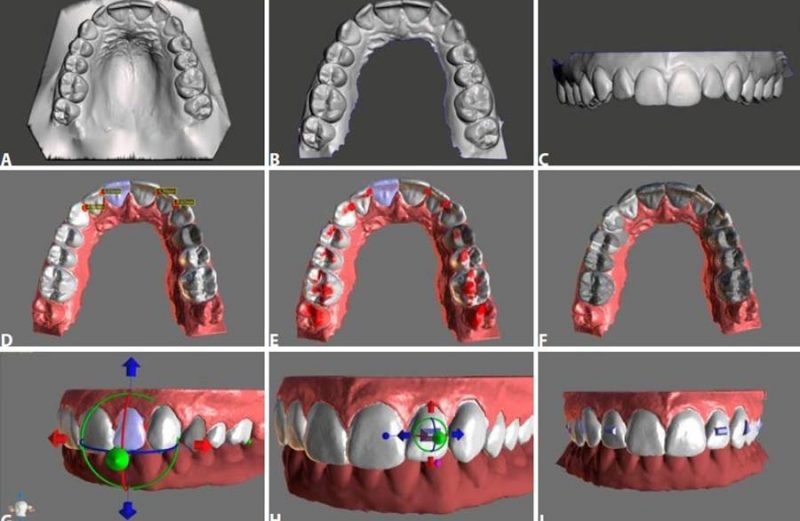Vol. 13 – Number 49 – 2020 Point of view column Page 25-28 Transparent aligners as an alternative treatment for less complex cases. Is it possible in the office? Thiago Martins Meira1 Ana Carolina Mastriani2 Armando Yukio Saga3 Giovani Ceron Hartmann4 Gil Guilherme Gasparello1 Oscar Mario Antelo1 Orlando Tanaka5 Introduction Transparent or aesthetic aligners in orthodontics are increasingly used to treat a variety of malocclusions. Despite the recent growth in demand, especially by adults, for this modality or treatment approach, the concept of this was introduced into orthodontics by Kesling in 1945 and perfected by Sheridan et al. in 1993 using an analog workflow¹. In 1999, Align Technology (Santa Clara, California) launched the Invisalign® system using CAD-CAM technology and tooth movement simulation for the production of aligners². Since then, with the advance in the digital sector and the fall of Align Technology’s patents, more companies have made available aesthetic aligners in the orthodontic environment. Transparent Invisalign® system aligners are effective in promoting dental alignment, but may present greater difficulty in some clinical situations compared with the conventional system of treatment with brackets³, such as obtaining adequate occlusal contacts, torque control, vertical correction above 2.5 mm, anteroposterior correction and rotations³,4. Currently, the availability of virtual orthodontic planning software for the production of transparent aligners creates possibilities for orthodontists to also master this technology and apply it to their patients’ treatments by producing their own “in-office aligners”5 (Figure 1). However, orthodontists should analyze the advantages and disadvantages of this process to incorporate it into their clinical work routine. 1Postgraduate Dentistry-Orthodontics-PUCPR. 2Master of Dentistry and Orthodontics – PUCPR. 3Professor, Specialization in Orthodontics – PUCPR. 4Post-Graduating – Specialization in Orthodontics – PUCPR. 5Head Professor – PPGO – PUCPR.
This content is restricted to site members. If you are an existing user, please log in. New users may register below.




